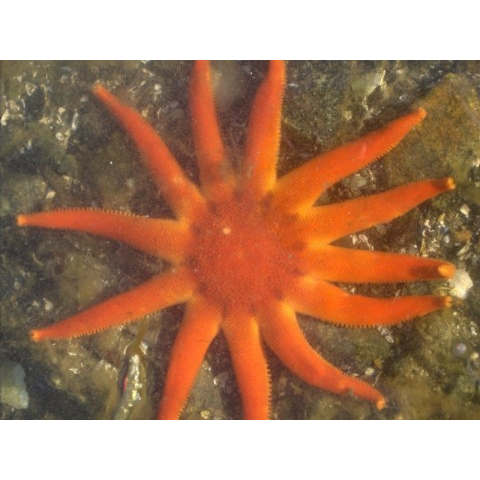Aug 21, 2020
Pleurozium schreberi (moss) DNA extraction
- 1Uppsala University

Protocol Citation: Eric RA Pederson 2020. Pleurozium schreberi (moss) DNA extraction. protocols.io https://dx.doi.org/10.17504/protocols.io.7ekhjcw
Manuscript citation:
"Genome Sequencing of Pleurozium schreberi: The Assembled and Annotated Draft Genome of a Pleurocarpous Feather Moss" (https://doi.org/10.1534/g3.119.400279).
License: This is an open access protocol distributed under the terms of the Creative Commons Attribution License, which permits unrestricted use, distribution, and reproduction in any medium, provided the original author and source are credited
Protocol status: Working
I used this protocol when working at Stockholm University as a post-doc and it worked.
Created: September 17, 2019
Last Modified: August 21, 2020
Protocol Integer ID: 27820
Keywords: Pleurozium schreberi, DNA extraction
Abstract
This is a detailed protocol concerning the DNA extraction from the genome paper titled "Genome Sequencing of Pleurozium schreberi: The Assembled and Annotated Draft Genome of a Pleurocarpous Feather Moss" (https://doi.org/10.1534/g3.119.400279).
Materials
- Axenic Pleurozium schreberi
- CTAB Buffer; 10% CTAB, 100 mM Tris, 1.4 M NaCl, 20 mM Na2EDTA (pH 8), autoclaved (store at 4°C)
- autoclaved milli-Q water
- N-lauroylsarcosine buffer: 10% N-lauroylsarcosine, 100 mM Tris, 20 mM Na2EDTA (pH 8), autoclaved (store at 4°C)
- Proteinase K stock: 10 μg/μL
- Pronase stock: 10 μg/μL
- RNase A stock: 10 μg/μL
- β-Mercaptoethanol
- ethanol for cleaning
- sterile bench
- water bath that can be set to 60°C and can shake.
- 5 M ammonium acetate
- 70% ethanol
- centrifuge
- chloro-form-isoamylalcohol
- isopropanol
- TE buffer
- Liquid nitrogen
- mortor and pestel
- 2 ml eppendorf tubes
- scale
Safety warnings
This protocol involves the usage of 10% CTAB, which is highly volatile.
Before start
Ensure you have obtained the axenic Pleurozium schreberi line from the International moss stock centre in Frieburg, Germany, or from one of the laboratories that currently have it. To ensure that you do not contaiminate your DNA take the precaution of taking the tissue while in a sterile hood.
Also it is important to have a tissue blender to make young tissue, which is easier to extract DNA from.
Have isopropanol stored at -20°C
Pre-labelled tubes always helps.
Tissue destruction
Tissue destruction
Pre-warm the CTAB buffer and N-lauroylsarcosine buffer.
Ensure that the sterile bench is clean off and all the lab plastic and equipment is sprayed and placed in the sterile bench for at least 15 minutes.
Clean forceps with ethanol and burn until red.
Proceed to take the tissue and place in 2 ml tubes for storage or to use immediately.
Grind the tissue using mortar and pestle in the presence of liquid nitrogen until finely ground. Transfer frozen ground tissue to a 2 ml tubes.
Weigh the tissue by subtracting the tube.
DNA extraction
DNA extraction
For every gram fresh weight add;
- 1 mL CTAB buffer
- 300 μL N-lauroylsarcosine buffer
- 60 μL Proteinase K stock
- 90 μL Pronase stock
- 120 μL β-Mercaptoethanol.
Mix by inversion and incubate in a water bath in 60°C for 60 min.
Cool to room temperature.
Add 1 vol of sterile 5 M ammonium acetate, mix, and incubate for 5 min.
Centrifuge for 10 min at 15,000 g at room temperature.
Precipitate the DNA from the supernatant with 1 vol of isopropanol at -20°C for 30 min.
Centrifuge for 30 min at 12,000 g at 4°C.
Wash pellet with 70% ethanol, dry, and redissolve in 1 mL TE buffer.
If the DNA will be used for sequencing, use water instead (milli-Q water)
Add 100 μL of RNAse stock. Incubate at 37°C for 15 min.
Perform 2 extractions with 1 vol of chloro-form-isoamylalcohol (24:1).
Vortex for 1 minute and centrifuge for 10 min at 12,000 g at 4°C.
Transfer the upper, aqueous phase to a fresh tube and add 1 volume of chloroform:isoamyl alcohol (24:1).
Vortex for 1 minute and centrifuge for 10 min at 12,000 g at 4°C.
Transfer the upper, aqueous phase to a fresh tube.
Remove any transferred chloroform by centrifugation 10 seconds at top speed followed by removal of the bottom phase.
Precipitate the DNA from the aqueous phase with 1 volume of isopropanol.
Centrifuge for 30 min at 12,000 g at 4°C.
Wash pellet with 70% ethanol
Use pipette to discard the ethanol
Air dry to ensure ethanol is gone.
Do not overdry
Redissolve the pellet in 500 μL TE buffer.
If the DNA will be used for sequencing, use water instead (milli-Q water)
